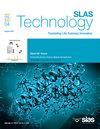Research on the mechanism of motor muscle control based on optical EEG images
Abstract
The study of motor muscle control mechanisms can improve rehabilitation therapy and human-computer interaction technology. The limitations of traditional electroencephalography (EEG) limit the comprehensive understanding of motor muscle control mechanisms. Therefore, this study aims to explore the mechanism of motor muscle control based on optical EEG images, in order to expand the understanding of the process of motor control. The study selected optical EEG imaging technology as the main data acquisition tool. Optical EEG images have higher spatiotemporal resolution and can provide more detailed neural activity information. This technology combines optical imaging with EEG images to obtain spatiotemporal information of brain activity in a short period of time. The device is composed of multiple optical sensors and can measure blood oxygen concentration and neuronal activity in the cerebral cortex. Preprocess EEG image data using image processing and signal processing techniques, then use computational methods and algorithms to detect activated regions, and evaluate their relationships using correlation analysis and statistical methods. By comparing EEG image data and motor muscle activity data under different motor tasks. The research results show that optical EEG imaging technology can provide more detailed information on brain neural activity and accurately capture the activity patterns of different motor muscles. These results provide new perspectives and methods for further studying the control mechanisms of motor muscles.

 求助内容:
求助内容: 应助结果提醒方式:
应助结果提醒方式:


